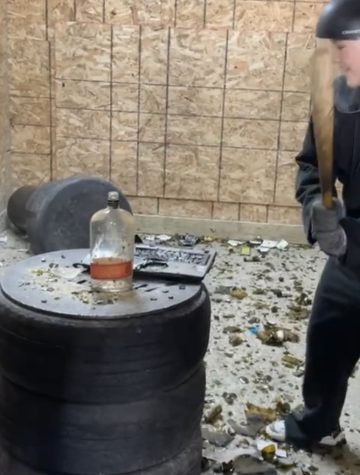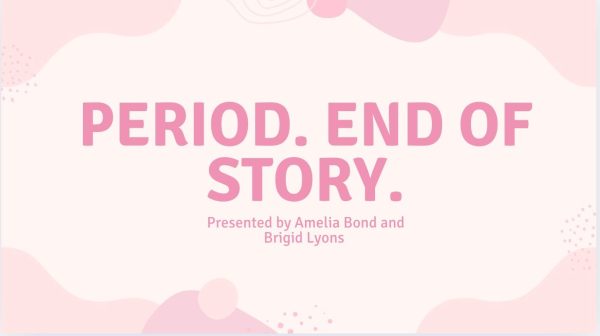“Breakage” – AP Lang Path Making Essay

The bottle immediately, to me, seems out of place. In a room filled with destruction and debris, it is perched atop of the tirestack, delicate and intact. It’s a little eerie to me, almost prophetic, surrounded by the remnants of broken bottles. The walls of the bottle are cold, glass, and definite. The coldness and hardness of the bottle is undeniable. I’m in the photo too, grinning eagerly, ready to take a swing. Because the bottle represents something to me that may not be immediate. Though it may seem like this picture is taken in an abandoned junkyard, the broken glass and debris are actually intentional. The bottle was found in a rage room, existing to be a recipient of anger and a representation of it. The rage room transformed the bottle from a mundane, everyday object, to a manifestation of fury.
I can’t help but be reminded of the phrase “bottling up”, a metaphor used to describe suppression of feelings, like anger. The bottle is a perfect representation of this, as the walls of the bottle seem so obvious, so inescapable. There is no oxygen inside the bottle. No room for breathing, similar to the inescapable feeling of emotional suppression. We push all our frustration and emotion deep inside of this bottle, letting it build up, yet continuing to suppress it until… we break. Because there’s only so much space in the bottle for our anger. Its boundaries are unforgiving when forced to contain all that we push inside of it.
And maybe that’s why the bottle, to me, initially seemed like it didn’t belong. It was exposed, along with the anger it represented. It felt unnatural to reveal that anger. The nature of suppression, of “bottling up”, does not allow for anger to be exhibited comfortably. This is especially true, I’ve learned, if you’re a woman. Traditional femininity is challenged by the notion of exhibited anger. Yet the shards of glass in the image are so sharp, the damage so jarring, and the bottle so breakable. The rage is observable and endured.

The bottle did break. I know this because I broke it. The bat is in motion, gripped onto fervently. It penetrates the anger in the air with intention and passion. It’s aligned with the bottle, inevitably going to shatter it. But the most interesting part of the bat to me is not the item itself, but how it’s being used. The purpose of the bat is to destroy the bottle, but maybe its effect is not inherently destructive. By breaking the bottle, the anger that it holds and represents is shattered and released. Every swing is cathartic. Breaking the bottle is not representative of the breakage of character, but rather taking ownership of that anger and transforming it.
It seems almost counterintuitive that something used to cause destruction, in the context of the rage room, is actually utilized to be productive. And yes, the bat is acting destructively, but maybe there’s such a thing as good destruction. Good anger. The rage room reshapes the bat, something that is typically a weapon, into a tool. Because when that anger is taken ownership of, when we hold onto the bat, the anger becomes a tool. It’s at our disposal. It’s in our hands.
Earlier I wrote about how the bottle was sitting so stagnantly seeming prophetic. And I think, for me, it’s the nature of glass being breakable that makes its destiny seem so inevitable. Everything that comes together falls apart, so the bottle must break. And this made me wonder about the journey the bottle could have taken. On one hand, it could have been destined as trash, shoved in some landfill, treated as clutter and debris. Or it could have been recycled. And while the rage room doesn’t act as traditional recycling, the bottle was still transformed. It was still the bottle, harsh and cold as ever, but it became something new once exposed to the rage room. It became something healing.
And that is exactly why the bottle is such a wonderful physical example of the way rage functions. Anger itself isn’t inherently destructive, but it’s when we suppress and confine it that it becomes hostile. We have a choice when exposed to anger. We can let it destroy us, we can let it break us, or we can take our bats and break these bottles ourselves.






